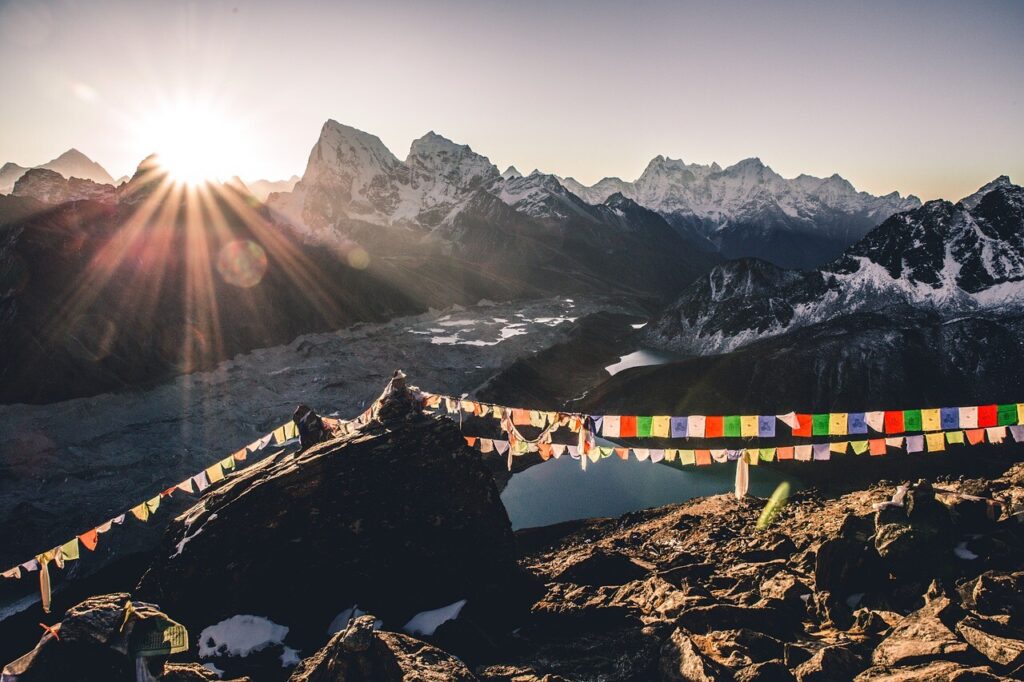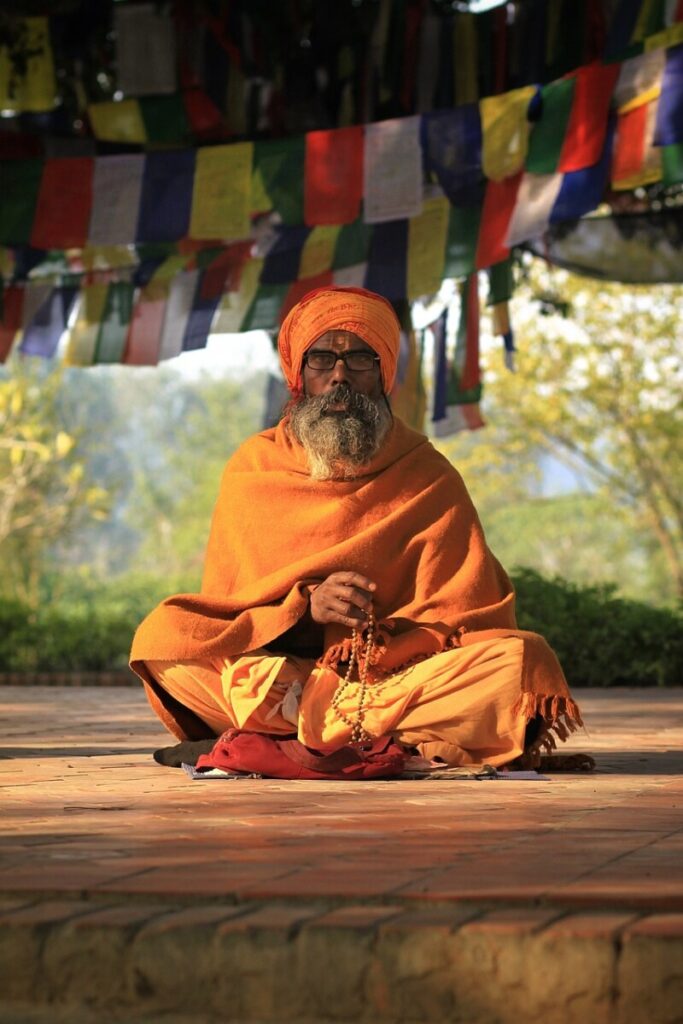After presenting some of the typical dishes of Nepal that you can enjoy during your international volunteer experience, and without straying too far, today we will talk about one of the most emblematic sites in the area, and in the world.
Obviously, Everest.
Mount Everest, the highest mountain in the world also known as Mount Sagarmatha in Nepali and Chomolungma in the Tibetan language, with an altitude of more than 8,840 meters above sea level.

It is located in the Himalayan mountain range bordering Nepal and the Tibet Autonomous Region of China, in southern Asia, and is an imposing spectacle of nature that makes us reflect on the immensity of nature and its unstoppable force.
In addition, its height and difficulty in ascending make it a symbol of challenge and achievement for mountaineers from all over the world who visit it every year. It receives thousands of visitors each year, including both mountaineers seeking to reach its summit and tourists who wish to admire its majesty from the base camps. In 2019, a world record of more than 58,000 tourists was recorded in the Everest region, and in 2024, it experienced a notable increase in the number of visitors. According to estimates, approximately 600 foreign climbers, supported by about 900 Sherpas, attempted to reach the summit from the Nepalese side, totaling around 1,500 people on the mountain. Additionally, there was a significant increase in general tourism, with more than 50,000 people trekking to Everest Base Camp.
Due to the increase in visits, significant environmental concern has been generated as waste accumulates, and to mitigate human impact, Nepalese authorities have implemented measures such as limiting the number of climbing permits and making it mandatory to remove this waste during expeditions.
Mount Everest was named the highest mountain in the world in 1856 by British surveyor Andrew Waugh, who named it in honor of his predecessor, Sir George Everest. However, the local name in Nepali is Sagarmatha, which means “Forehead in the sky,” while in Tibetan it is known as Chomolungma, “Mother of the universe”12.
The first climbing attempts began in the early 20th century. In 1924, British mountaineers George Mallory and Andrew Irvine disappeared near the summit in an attempt to reach the top. It wasn’t until May 29, 1953, that New Zealander Edmund Hillary and Nepali Sherpa Tenzing Norgay achieved the first successful ascent, paving the way for future expeditions1.
Climbing Everest is one of the most extreme challenges humans have faced as it requires specific preparation, both physical and mental, and of course, proper equipment.
Some of the greatest dangers are altitude and altitude sickness; above 8,000 meters, lack of oxygen causes disorientation, loss of coordination, and pulmonary or cerebral edema. In addition to all this, weather conditions are totally unpredictable, with strong winds, temperatures that can reach -60°C, and added to this, avalanches and ice falls that are a constant threat, especially in the Khumbu Icefall, one of the most dangerous sections of the route.
But despite the risks and challenges, Everest remains an icon of mountaineering, attracting adventurers determined to conquer its summit and test the limits of the human body and mind.

SOME CURIOSITIES
Mount Everest continues to rise, growing 4mm per year, due to the collision of the Indian and Eurasian tectonic plates.
Above 8,000 meters, oxygen levels are so low that the human body begins to deteriorate, making this area the dangerous “death zone.” In fact, the area is often referred to as a human cemetery. It is estimated that more than 320 people have died on Everest since 1922, meaning that 1 or 2 out of every 100 climbers die (despite the risk, the mortality rate has decreased over the years thanks to better equipment and preparation).
Human bodies left abandoned on the mountain serve as reference points for other climbers. Many are never recovered due to extreme conditions.
The person with the most ascents is Sherpa ‘Kami Rita,’ who has held the record since 2023 with 28 climbs of Everest.
During peak season, long lines of people form, creating traffic, waiting their turn to reach the summit, which considerably increases the risk of accidents.
The youngest climber to reach the summit was Jordan Romero at 13 years old, from the United States, in 2010, and the oldest climber was Yuichiro Miura, a Japanese man who reached the summit at 80 years old in 2013.

Climbing Mount Everest is undoubtedly a personal challenge for many people, but it is important to do it with the utmost preparation and respect for the world.
The immensity of nature cannot compete with human beings.
And you, would you live this experience?




